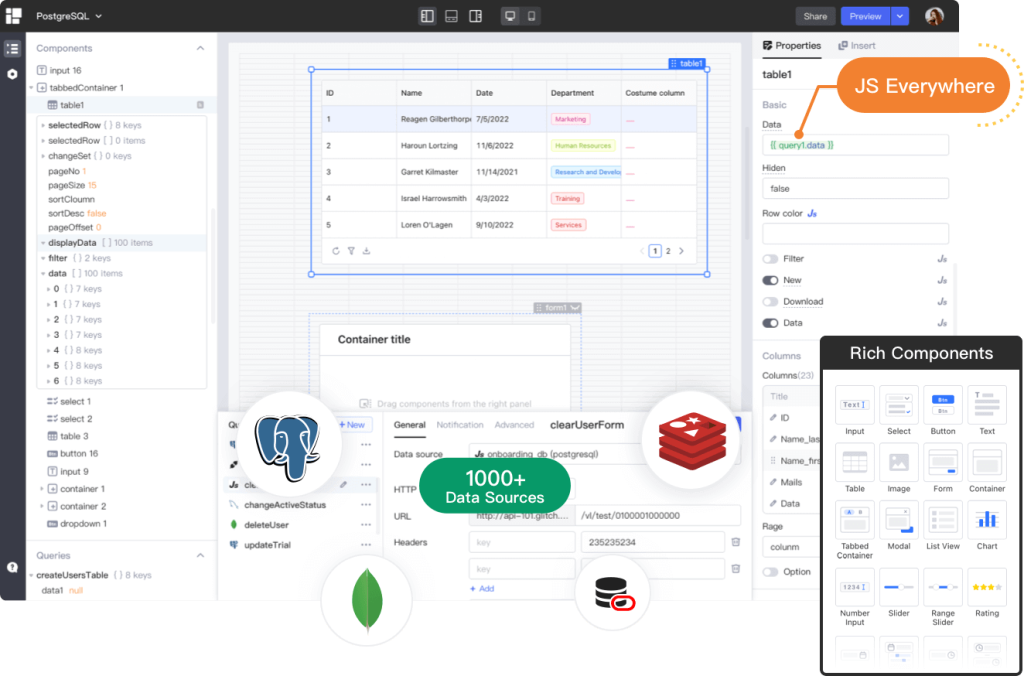
In the ever-evolving landscape of software development and deployment, the need for streamlined solutions that enhance productivity while maintaining flexibility is paramount. OpenBlocks emerges as a promising contender in this arena, offering a robust set of features designed to simplify the process of building and deploying applications. In this blog post, we will delve into the features of OpenBlocks, and provide a step-by-step installation guide using Docker and Portainer.
Understanding OpenBlocks
OpenBlocks is an open-source platform designed to facilitate the development, deployment, and management of applications in a containerized environment. Its feature-rich toolkit empowers developers to streamline their workflows and focus on building high-quality software without getting bogged down by the complexities of infrastructure management.
Key Features:
- Container Orchestration: OpenBlocks leverages containerization technologies such as Docker to orchestrate the deployment of applications across diverse environments. This ensures consistency and scalability, allowing developers to seamlessly transition from development to production.
- Integrated CI/CD Pipelines: With built-in support for continuous integration and continuous deployment (CI/CD) pipelines, OpenBlocks automates the process of testing, building, and deploying applications. This accelerates the release cycle and promotes a culture of rapid iteration and experimentation.
- Scalability and High Availability: OpenBlocks provides robust mechanisms for scaling applications horizontally and ensuring high availability. By dynamically allocating resources based on demand and distributing workloads across multiple nodes, it enables organizations to handle fluctuations in traffic and maintain uptime.
- Monitoring and Logging: Comprehensive monitoring and logging capabilities empower developers to gain insights into the performance and health of their applications. OpenBlocks integrates with popular monitoring tools such as Prometheus and Grafana, allowing teams to identify and address issues proactively.
- Security and Compliance: Security is a top priority in today’s digital landscape, and OpenBlocks prioritizes the implementation of best practices for securing applications and infrastructure. From access control policies to vulnerability scanning, it provides a robust security framework that helps organizations mitigate risks and comply with regulatory requirements.
Installation Guide using Docker and Portainer
Now that we have a clear understanding of OpenBlocks and its features, let’s walk through the installation process using Docker and Portainer.
Prerequisites:
- Docker installed on your system
- Portainer installed and running (you can install Portainer using Docker as well)
Steps:
- Pull the OpenBlocks Docker Image:
docker pull openblocks/openblocks - Create a Docker Network:
docker network create openblocks_network - Run the OpenBlocks Container:
docker run -d \ --name openblocks \ --network openblocks_network \ -p 8080:8080 \ openblocks/openblocks - Access OpenBlocks via Portainer:
- Open your web browser and navigate to Portainer’s dashboard (usually http://localhost:9000).
- Log in with your credentials.
- Click on “Containers” in the sidebar.
- Locate the “openblocks” container and click on it to access the OpenBlocks dashboard.
- Configure OpenBlocks:
- Follow the on-screen instructions to configure OpenBlocks according to your requirements.
- Set up CI/CD pipelines, define deployment strategies, and configure monitoring and logging integrations as needed.
- Start Deploying Applications:
- With OpenBlocks up and running, you’re now ready to start deploying your applications effortlessly.
- Utilize the intuitive interface to manage your projects, monitor their performance, and scale them as needed.
Conclusion
OpenBlocks represents a paradigm shift in the way we approach application development and deployment. By providing a comprehensive suite of tools and an intuitive user interface, it empowers teams to accelerate their workflows and deliver value to their customers faster. With its emphasis on scalability, reliability, and security, OpenBlocks is poised to become a cornerstone of modern software development practices. So why wait? Dive in and unlock the full potential of OpenBlocks today!



